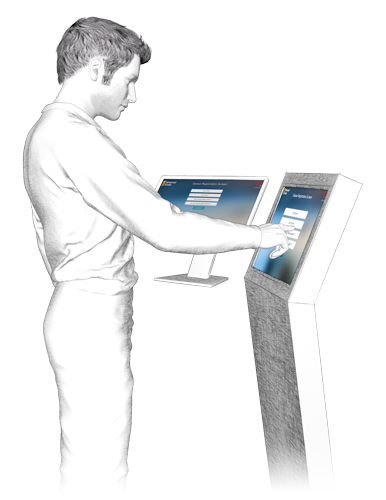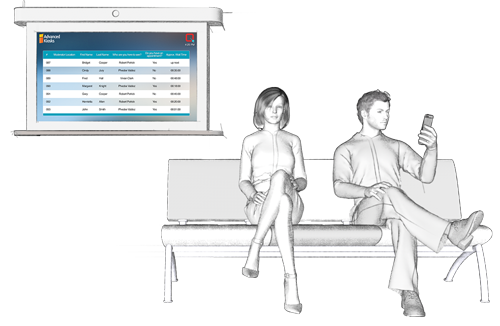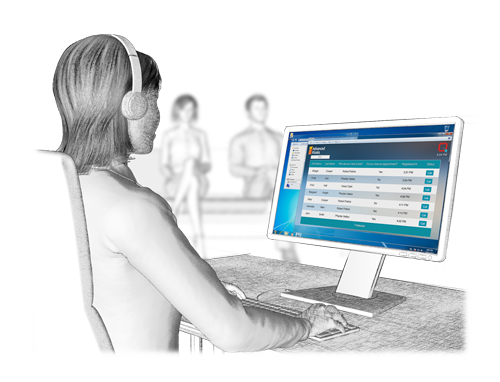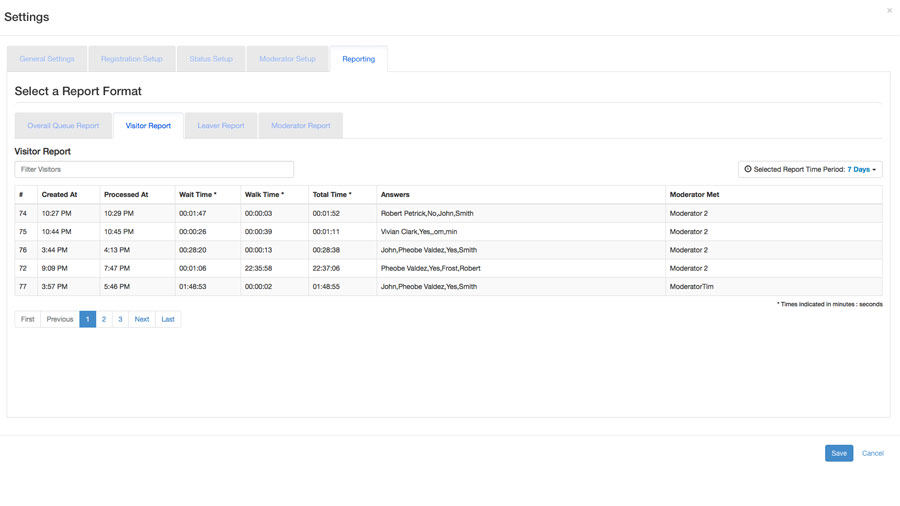

HOW OUR QUEUING SYSTEM WORKS
Understanding Qline

CHECK-IN
This simple step can often be the most critical in the queuing system, since it will usually be the first point of contact with the customer when they visit. How well this goes can often sway how the customer feels about the entire experience. A mistake prone paper process is no way to start off. Instead greet them with a clean, easy interface that will guide customers through your questions, get clear concise answers, and see the information through the cloud portal for real-time statistics.
No hard to read writing, less paper to manage, happier customers, and less expenses. In addition, being hardware independent you can add on peripheral equipment such as printers to produce queue tickets and wait times.

STATUS BOARD
It’s not a new concept that things seem to slow down when you have to wait. Adding the uncertainty of not knowing when you’re up only makes it worse. How can you combat this queuing system problem? Bring your customers into the know by displaying the queue on a lobby status board. This display can be customized to display departments, assigned numbers or names, and notices for those being called. Having the ability to confirm where they are in the queue, makes it easier to relax and as a result customers feel a reduced perceived wait time.

AGENT
For every efficient line there should be someone managing it, and in our case that would be the receptionist or agent. They are in charge of calling up people in the queue, and have access to seeing and editing visitor information, queue, wait time, and current status. That means not only calling up individuals when ready, but also declaring them as no shows, or moving them to a different queue if needed.
A part of being a scalable solution means that more than one agent can be added to the system with their own login. Each can call people from the queue or make edits, and because it is web based all other agents logged on will see the changes immediately. A feature that come particularly handy in situations where multiple departments share a common waiting area.

BACK-END MANAGER
This in a way is where the magic happens in the realm of virtual queueing systems. It’s here authorized users can access all the data collected from the check-in and queuing process. This includes the information entered by the customer, how long customers are waiting, visitor flow to each department, drop rates, and more, all in real time or can be exported for further analysis or lead generation. With this data you can make better decisions on operations with improved process visibility, or get a quick and accurate report on the number of customers coming to your organization.
That isn’t where the buck stops either. The administrator module is also where the department structure, user/agent privileges, questions, automation settings, appearance, and other custom settings are determined. All tools are accessible from the cloud so you can change what you want, when you want.

QUEUING THE MODERN WAY
Typical queuing methods may work, but hidden behind the traditional processes there is progress to be made.
Let Qline help you modernize your organization and boost not only its efficiency,
but also help create the type of high value service your customers love.
Advanced Kiosks
134 Hall Street, Units F/G
Concord, New Hampshire 03301
134 Hall Street, Units F/G
Concord, New Hampshire 03301
E: Sales@AdvancedKiosks.com
P: 1(866)783-3791
© Qline™, an Advanced Kiosks® product 2015
